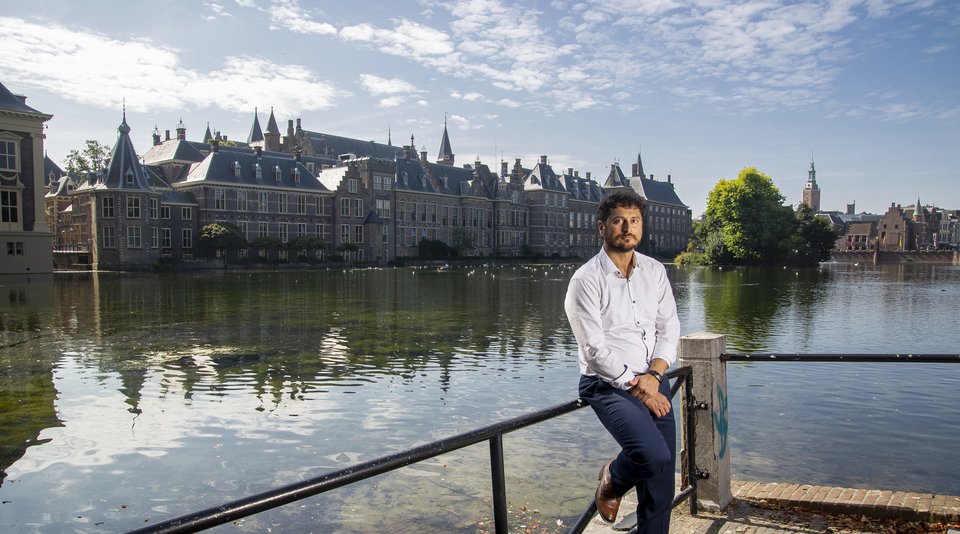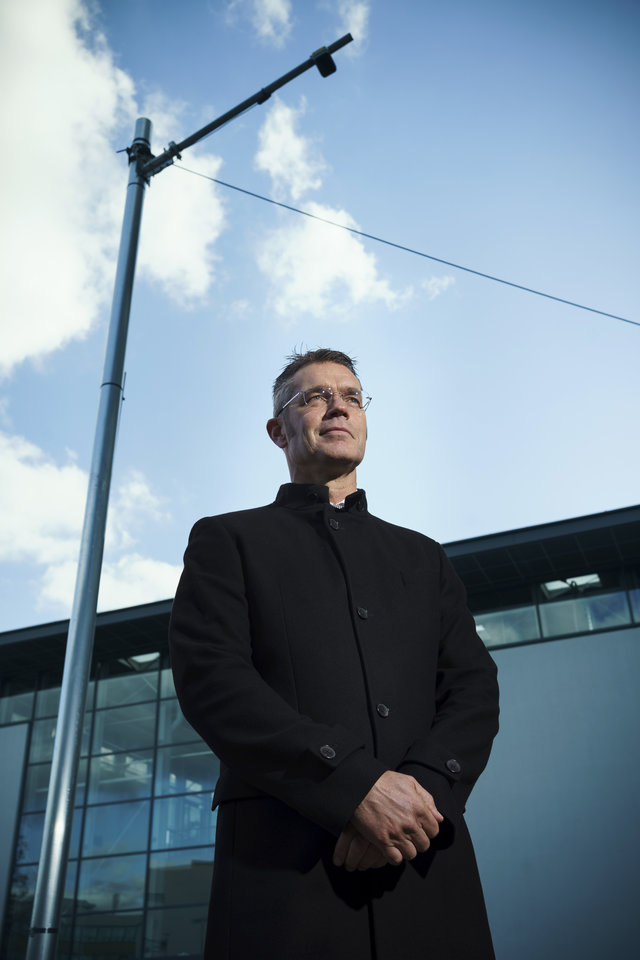Climate change greatly increases the risk of flooding. For his master’s thesis, Jonas Lechner used a smart model to study the role households can play in reducing flood risks in coastal cities. It turns out they can play a big role. His research earned him the title of best graduate of the Faculty of Technology, Policy and Management.
Climate change is developing so rapidly that dykes and other large-scale flood defences no longer provide adequate flood protection everywhere at all times. To stay dry, we need to find a broader set of measures. One way of doing this is to involve the public in bringing about solutions, says Jonas Lechner, student Complex Systems Engineering and Management.
“Simple measures, such as sandbags in front of the door, can reduce the chance or impact of flooding. This creates an extra layer of protection. The top-down approach of leaving everything to the government is outdated. This challenge is so great that all levels of society, government and individuals such as households, must adapt to climate change.”
Role of households in reducing flood risk
To develop good strategies for public participation, it is important for government bodies to know what role households can play in reducing flood risks. Lechner tried to answer this problem with his thesis. “There is a lot of information available about how and why households adapt. What is missing is the understanding of the impact of household adaptation on flood risk.”
Lechner chose Shanghai as his focus area. “Because research into flood risk in coastal areas often focuses on the Global North, I thought it would be more interesting to choose a different area, which is how I ended up selecting Shanghai.” Shanghai is one of the most flood-exposed cities in the world. Due to its dense population, rapid growth and economic importance, the flood impact is far-reaching.”
Mimicking reality as closely as possible
Lechner needed the data to develop an agent-based model, a simulation model. "With an agent-based model, you can often mimic reality very accurately. Such a model is particularly useful when studying complex systems. What makes my research stand out is that my model tackles the major research challenges in this field: Using context-specific survey data and social theories for household decision-making as well as linking the households’ decisions to floods that increase in severity and frequency with climate change. My model therefore can replicate household behaviour more realistically.”
Lechner explains how agent-based modelling works. “An ‘agent’ is a person or object, such as a car or tree, and in my case, a household. You can assign individual characteristics to each agent. This could be someone’s age, income, possessions or education, or the extent to which someone expects a flood to actually take place and how concerned they are about it.” By combining the agent’s characteristics with rules, agents make decisions. For instance, a household can only adapt a measure if it can afford it.

Behaviour and choices under different circumstances
Lechner obtained data on household characteristics and behaviour from surveys conducted in previous research and from literature. He also used available flood risk maps and downloaded locations of residential complexes and houses from OpenStreetMap. “With the data in the agent-based model, you can carry out numerous experiments. Each experiment is repeated for hundreds of times. This gives you a whole set of outcomes that reveal behaviour and choices under different scenarios.”
You can also factor the influence of the environment into the model, says Lechner. “If a neighbour takes measures, someone might be more likely to think: I should do something too. To understand whether household adaptation without external influences is enough to keep up with climate change, I left out government policies, such as encouragement through subsidies or advertisements. That could be interesting for follow-up research.”
Keep water out or limit damage
Lechner distinguishes between three categories of measures households can take. “The first is elevating a home, which can be done with concrete or piles, for example. But this is only possible if you’re a homeowner and don’t have to deal with other owners when making decisions, as is the case if you live in an apartment complex. I also put those conditions into the model.”
The other two types of measures are dry-proofing and wet-proofing, Lechner continues. “Dry-proofing focuses on preventing water from getting inside. For example by sealing off a house with sandbags or taping up windows and doors. Wet-proofing involves limiting damage once water gets into your home. For example, by placing valuable items higher up or by protecting furniture.”
Lost in the details of the model
Although Lechner had gained experience with agent-based modelling during his degree programme, developing this model was no walk in the park. “The greatest challenge was deciding what data I did and didn’t want to put into it. At first, I was inclined to put as much information into the model as possible, but this soon made it so complicated that I got lost in the details."
So the trick was not to include too much data, but not too little either, says Lechner. “By reducing the big issue to smaller problems, I got an increasingly better idea of what was and wasn’t relevant. I also followed one of my lecturers' step-by-step process of how to build agent-based models. What also really helped was that I had built agent-based models before. Otherwise, I don’t think I would have figured it out.”
Significant role for households
Ultimately, Lechner’s research produced some interesting results. “If you look at the key question of my research, about the role of households, it turns out that in some scenarios there is 50 percent less residential damage after a flood when households take measures. This means that households can play a very important role in flood protection in Shanghai. There is a great willingness to take measures, especially when people are very concerned.”
A surprising finding for Lechner was that people who have experienced flooding do not necessarily take more protective measures. “Beforehand, it made sense to me that they would. After all, they are more aware of the risk and the potential damage. But the model revealed exactly the opposite, simply because ‘experienced’ people no longer have the money or resources to take measures due to previous flood damage. That does actually make quite a lot of sense.”
Differences between high and low incomes
Clear differences also emerged between groups, such as high and low-income households. Lechner: “People with a low income have less money and resources to take measures, putting them at a greater risk of damage. As a result, they often end up in a vicious cycle: damage costs them more money, which further diminishes their ability to adapt in the future. So my research shows that climate change can also lead to greater inequality.”
According to Lechner, it is important for policymakers to understand this. “If, as a government, you want everyone to be able to take measures, you have to provide support to people with lower income, for example through subsidies. Or by creating targeted campaigns on how people can protect their homes and possessions in an accessible and affordable way. In any case, we are not going to be able to keep up with the pace of climate change without government incentives.”
Hugely proud of best graduate title
Because of the social importance of his thesis, the insights gained and the research method used, Lechner was voted best graduate of the Faculty of Technology, Policy and Management. “First and foremost, I am, of course, very happy and proud of the final result. But I am also grateful for the help of others, such as my chair and my supervisors. They have provided me with tremendous support, challenged me and given me good ideas.”
What makes Lechner even more proud is that he is the first in his family to earn a Master’s degree. “I come from a farming family in Germany, and my parents and grandparents never went to university. In Germany, it’s pretty special to make it this far. Your background is often a determining factor in what you can achieve in the future. But I have now shown that your background doesn’t have to stand in the way of life’s opportunities.”















